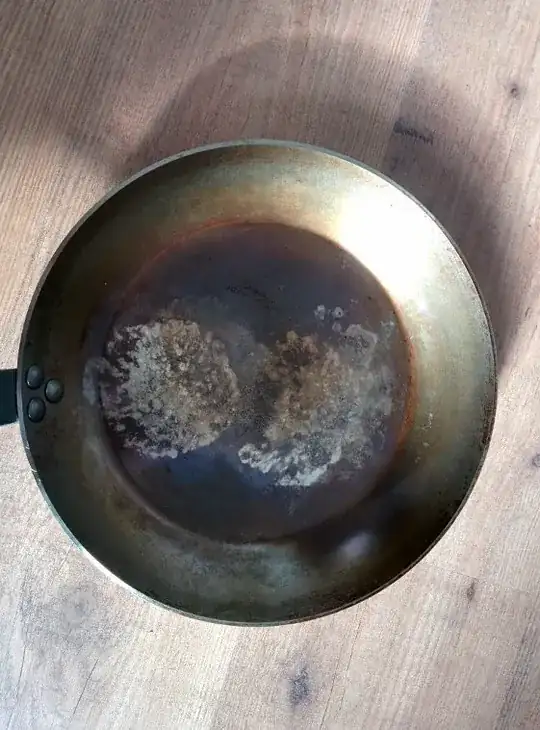It simply takes some time and experience to learn to do a seasoning well. Yours was too soft to work. The good part is that you can repeat it on the same pan until you got better results, the pan is not going to suffer from it.
First, there is the oil. Modern oils are engineered to be higher in unsaturated acids. This is done for health reasons, and some sources suggest them for seasoning specifically because they polymerise more easily, for example recommending flaxen oil for seasoning. In my experience, while it is much easier to create a good looking layer with them, this layer is way too sticky and soft for use. Personally, I prefer to use a sticky oil as the base layer, and put a few layers of lard on it.
Second, there is thickness. If a layer was too thick, it will peel off. A good seasoning is built up from many layers, each as thin as possible, and hardened separately, with full cooling down in between. If you can see thickness in your layer (the thickness of a standard office paper sheet), it's already dangerously thick. Wipe each layer before hardening, you don't want to see it pooling.
Third, there is temperature control. If this is your first iron pan, you might not have learned it yet. A new seasoning tends to be more damageable than an old, baked-on one. If the first few foods stick, they may "take off" some seasoning with them. I guess that, if you're good at frying precisely, you can start doing more adventurous stuff in the pan right away. But if you are not, better start with the kind of food which you know how to fry without it sticking. For example, this picture looks like you put lean burgers at too low a temperature and they cooked onto the seasoning instead of crusting right after hitting the pan. If you have a food you know you can crust well, use it (I do new pans best with crepes and scrambled eggs, but it needs the correct recipe, Ruhlman's crepes work). If not, start with greasy types of food with sufficient protein content and work from there. Introduce watery foods later, when the seasoning is doing well. Also leave starchy foods for later - although they work well enough if there is enough protein and some fat in them, see the crepes point above.
In the beginning, you might also want to not wash the pan. Simply wipe off excess fat with paper without introducing water. Of course, this is somewhat dependent on the success of the last point - if you have pieces of food stuck to the pan, it becomes harder to deal with them (a salt scrub can work better than water though). In the ideal case, the food peels off your seasoning without leaving anything to clean.
I also failed my first tries to get a pan well seasoned. But I also noticed that, the closer you get to a good seasoned state, the easier it gets, simply because each of the points is easier to follow through when you have less sticking. The beginning may be hard, but once you get in the positive feedback part of the process, it's worth it.
